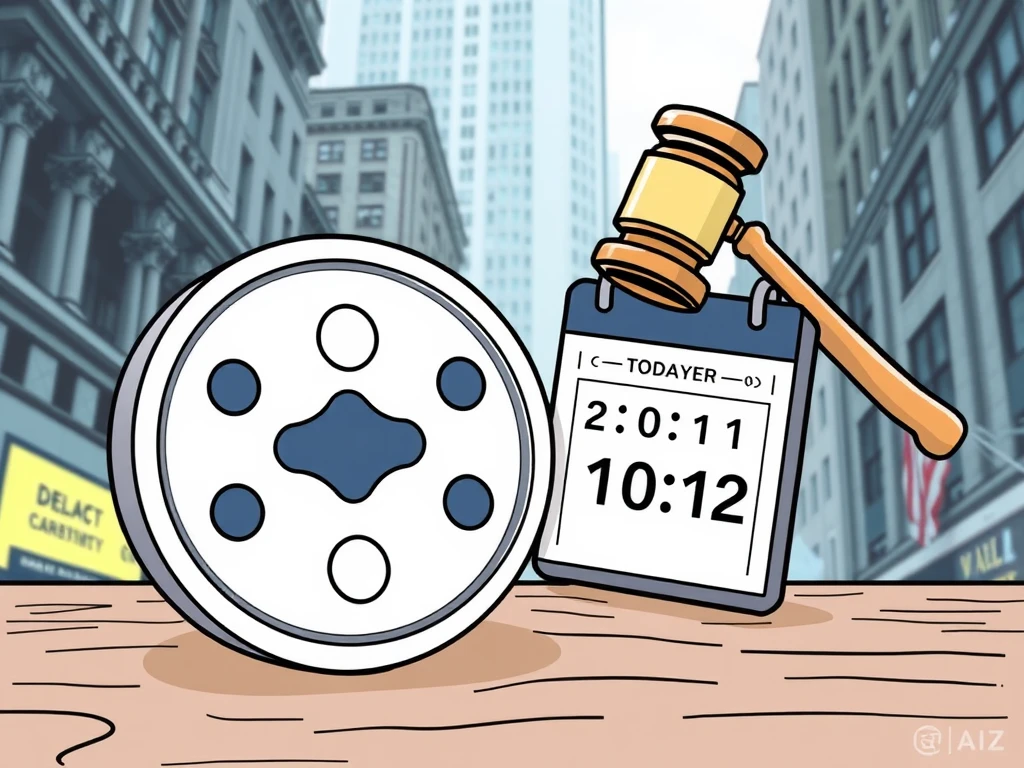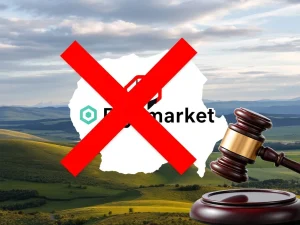Polkadot ETF Decision: Crucial Delay by SEC Sparks Uncertainty

The waiting game continues for crypto enthusiasts and investors. As the US market anticipates further integration of digital assets into traditional finance, regulatory hurdles remain prominent. The latest development involves a significant delay concerning a specific Polkadot ETF, pushing back expectations and highlighting the cautious approach taken by regulators.
What’s Happening with the Polkadot ETF and the SEC Decision?
The US Securities and Exchange Commission (SEC) recently announced a postponement regarding its ruling on a proposed exchange-traded fund designed to hold Polkadot’s native token, DOT. This particular filing comes from Grayscale, a major player in the digital asset investment space.
- The original deadline for the SEC decision on the Grayscale Polkadot Trust was approaching.
- According to official filings from April 24, the SEC has extended this deadline.
- The new date for a final ruling is now set for June 11.
- This delay follows the initial filing by Nasdaq on behalf of Grayscale back in February.
This move by the SEC is not entirely unexpected, as the regulator often utilizes the full extent of its review periods for novel or complex financial products like crypto ETFs.
The Broader Crypto ETF Landscape Beyond Polkadot
The proposed Polkadot ETF is just one piece of a much larger puzzle. The regulatory pipeline in the US is currently filled with numerous applications for various crypto-related funds. Analysts suggest there are around 70 different proposed crypto funds awaiting the SEC’s green light.
This extensive list includes potential ETFs for a wide range of digital assets and strategies:
- Funds holding specific altcoins like XRP, Litecoin, and Solana.
- ETFs focusing on memecoins such as Dogecoin.
- Products based on crypto-related financial derivatives.
Grayscale itself is actively seeking approval for several other altcoin funds, building on its existing lineup of spot Bitcoin and Ether ETFs. Other asset managers, like 21Shares, are also in the queue with their own proposals, including a separate application for a Polkadot ETF.
Understanding the Altcoin ETF Phenomenon
The surge in applications for altcoin ETF products reflects growing interest from asset managers in catering to investor demand for diversified crypto exposure through regulated, accessible investment vehicles. While institutional interest in crypto is reportedly on the rise, with many planning increased allocations, the potential demand for altcoin-specific ETFs compared to Bitcoin or Ether funds is a key consideration.
Experts point out that getting an altcoin listed in an ETF makes it more visible and accessible to a broader pool of investors, particularly those in traditional finance who prefer regulated products. However, this increased accessibility does not automatically guarantee significant investment flows. The success and demand for individual altcoin ETFs will likely vary significantly based on the underlying asset’s market position, utility, and investor sentiment.
What Does This SEC Decision Delay Mean?
The delay in the SEC decision for the Grayscale Polkadot Trust underscores the regulator’s cautious and thorough review process for digital asset products. It provides the SEC with additional time to assess various factors, including the underlying market’s liquidity, potential for manipulation, and custody arrangements for the digital assets. While frustrating for those eager for approval, these delays are standard procedure and do not necessarily indicate an eventual rejection.
Conclusion: Navigating the Path for Crypto ETFs
The SEC’s delay on the Polkadot ETF decision is a reminder that the path to integrating cryptocurrencies into mainstream investment products is deliberate and subject to stringent regulatory scrutiny. While the pipeline of proposed crypto ETFs is robust, reflecting strong industry interest and potential investor demand, each application faces a rigorous review. The coming months, leading up to the new June deadline for Polkadot and decisions on other pending applications, will be critical in shaping the future landscape of regulated digital asset investments in the United States.









